“Understanding what makes a successful customer onboarding process”.
Have you ever heard that your customers are your company’s most valuable asset? The logic is sound. Without loyal customers, it’s impossible to have a successful business.
This is why a new customer onboarding is a vital process for every organization.
With the right customer onboarding strategy you can achieve lasting relationships, customer retention and, ultimately, growth.
If you’re ready to revamp your customer onboarding experience and improve your bottom line, this blog is for you!
What is Customer Onboarding?
Client onboarding is the process of welcoming new clients into your business, addressing their questions and concerns, and ensuring they understand the services available to them.
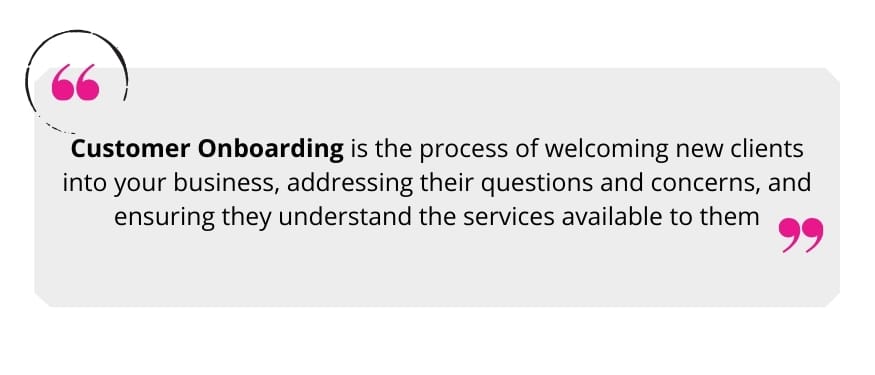
With the right process, you give your customer the opportunity to share their goals with you, set expectations and meet your team members.
By providing early introductions to the customer success manager, sales team and account representatives, you start creating and promoting trust.
This stage sets the tone for the rest of your professional relationship. As well as it shifts the conversation from transactional correspondence to a collaborative environment. If your business model isn’t prioritizing onboarding for your customers, challenges will certainly arise down the road.
Why is customer onboarding important?
If you’re not convinced based on the previous definition, here are a few customer onboarding stats for you.
A recent HubSpot article shared that:
-
-
- 40 to 60% of free trial users will use your product once and never come back.
- More than two-thirds of SaaS companies experience churn rates greater than 5%.
- Most revenue comes from existing customers.
- Happy customers become your top referral sources.
- Customer retention lowers acquisition costs and increases revenue.
-
Building a relationship with your customers is the best way to carry your company values, mission and vision. A good customer onboarding strategy tells your new customers who you are, what your product or service can do for them and why you care about their success.
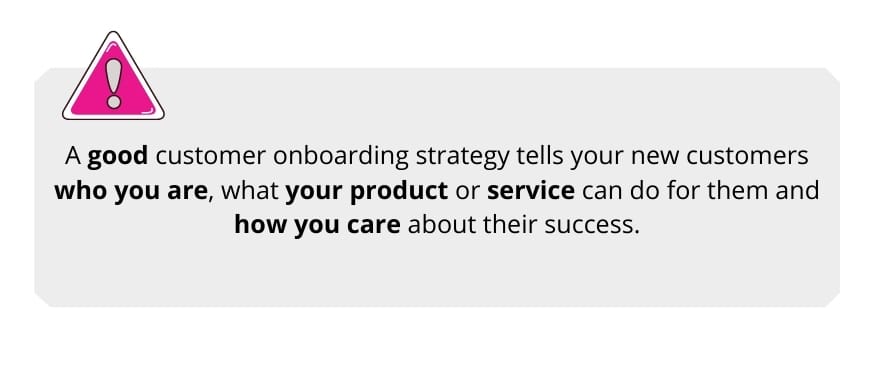
When discussing with your team, always transmit the importance of positive customer service interactions during the onboarding process.
Cultivating the importance of this process within your company will only bring stronger, longer, more profitable relationships in the future.
How to automate your Customer Onboarding
In a similar way to the process described in the video below you can automate your customer onboarding process in minutes.
Once you have your process well defined and mapped you can very quickly transform it into a digital one.
Automate your Onboarding in minutes!
3 Most common mistakes when onboarding new customers
By now you understand that a frictionless customer onboarding process only brings positive outcomes to all parties involved.
But what happens when companies struggle to develop a solid process due to a lack of resources, information, or time constraints? The 3 most common mistakes we see when onboarding new customers are:
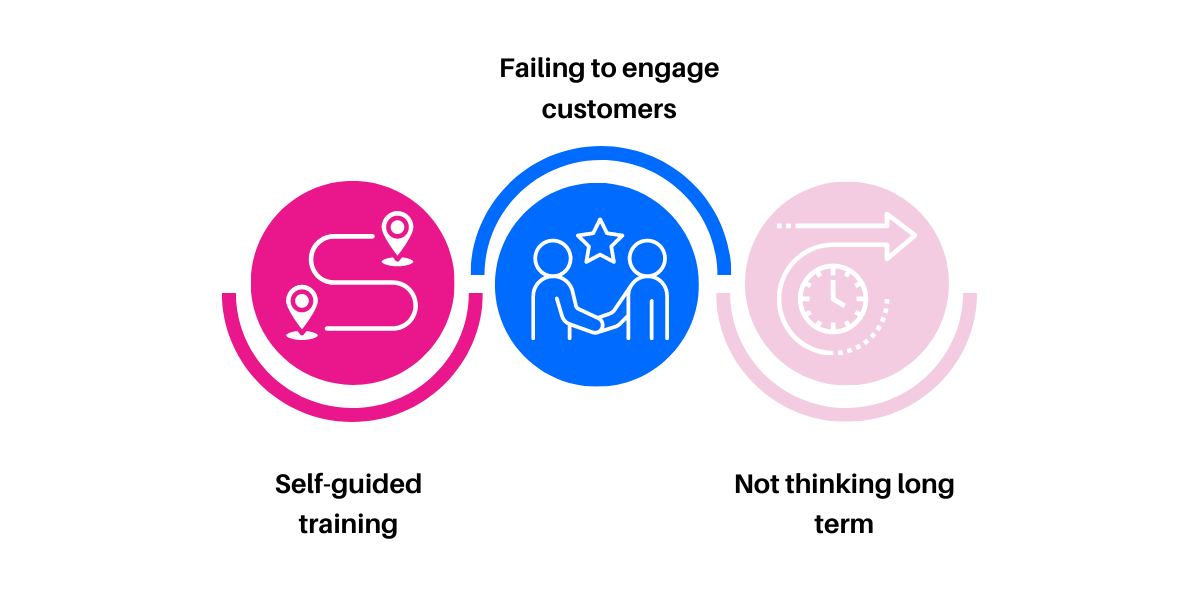
1- Relying entirely on self-guided training
If well it’s true you need a thorough knowledge base, you can’t rely uniquely on self-training. At least not during the onboarding period.
At this crucial point you will want to invest some time to guide and train your customer.
Assign a few hours as a complimentary training and add this is to your standardized process.
Make sure your new customer knows who to reach out and how if questions arise.
In this case, a Ticketing System could be of help.
Remember that your goal is to help him be fully proficient with your product, service or tool.
2- Not keeping customers engaged
Your client chose you because they believe you have a solution that will help them solve a problem. It is your responsibility to help them achieve this success by keeping them engaged throughout the entire process.
By scheduling regular calls, sharing relevant resources, and simply checking in, you’re communicating how important they are to you.
Collaboration is one of the most important aspects of business. During the onboarding process it must be at the forefront of everything you do. Simplify it by using collaboration tools that are easy to use.
3- Not thinking long term
According to Bamboo HR, the onboarding process should take anywhere from three months to even a year. It will depend on the complexity of the product. This general formula, however, doesn’t mean that your customer support efforts should end there. It’s actually quite the opposite!
What will be your customer needs 3 to 6 months from now? How can you continue to offer support and stay close to them?
A great way to ensure long-term success is to take advantage of tools like marketing automation.
When you introduce software that eliminates manual tasks, you can create more effective workflows for communication.
If your customer churn rate is higher than it should be, it could be due to the mistakes above.
Tip: Here’s how to calculate your company’s customers churn rate.
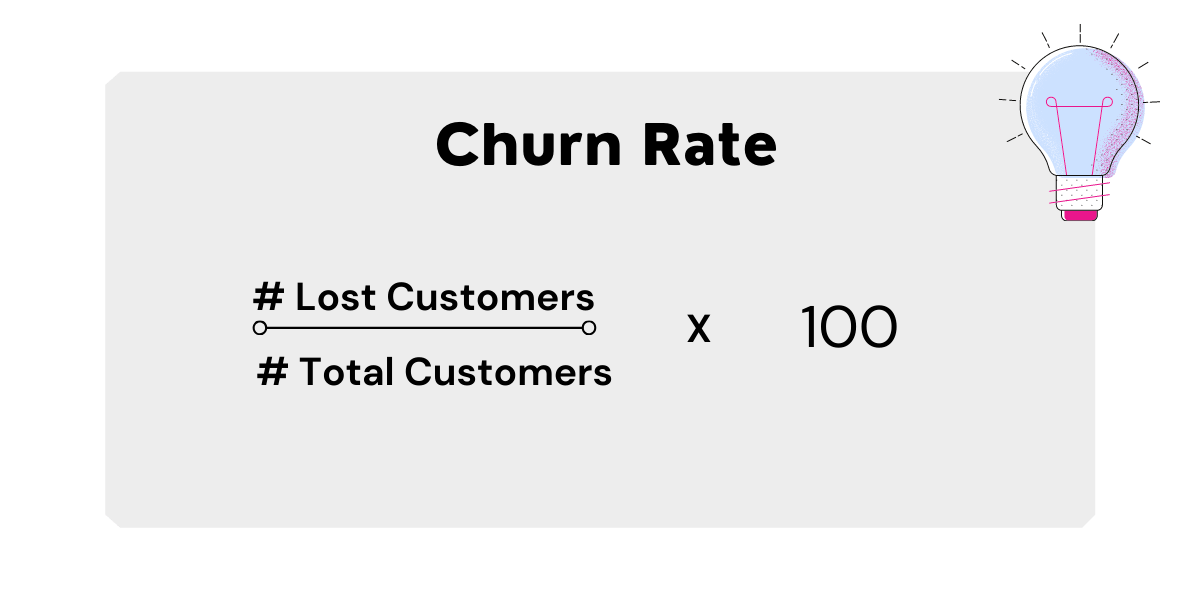
Customer onboarding process steps
Here’s a step-by-step on how you can successfully onboard customers.
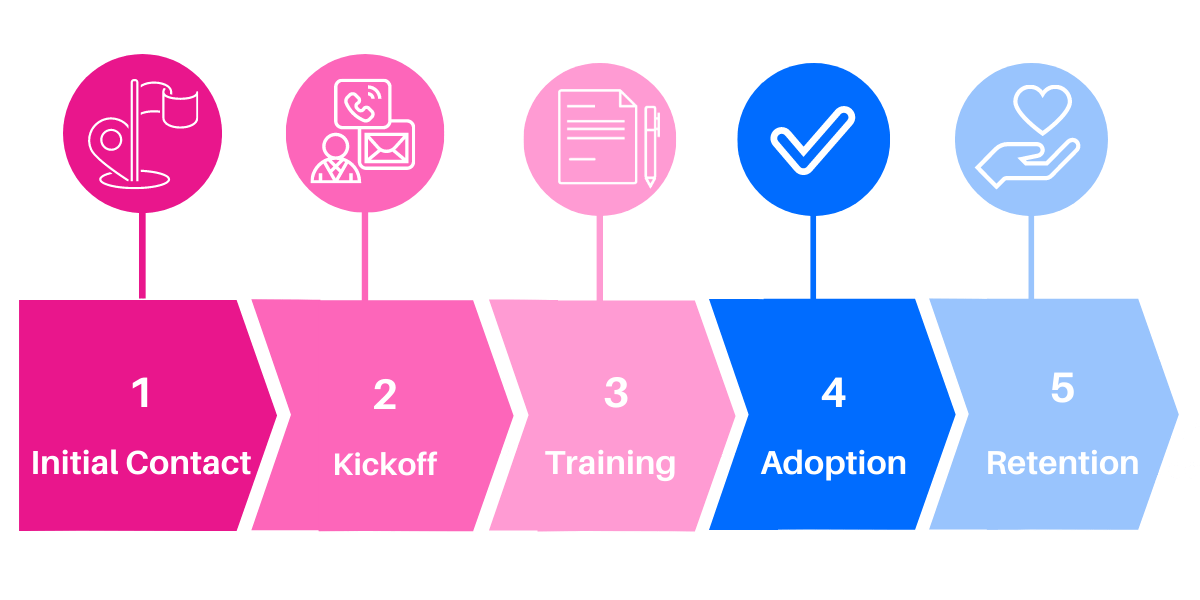
1- Initial Contact
As opposed to low-touch customer service, high-touch customer service requires human interaction and a strong relationship between parties. The initial contact is the best step for your customer to understand how the relationship will work.
During this stage of the customer journey, the account executive should:
-
-
- Introduce key team members, such as the project manager and the support team
- Further crystalize information regarding desired outcomes
- Define roles, tentative timelines, milestones and expectations
-
2- Kickoff
The kickoff is the appropriate time to discuss key performance indicators. As well as how you’ll measure success and how your product will help the client get there.
Even though you can introduce features and high-level how-tos, this conversation should be customer centric. During a kickoff call your main focus is to get to know the customer and answer any questions they may have.
Your kickoff call should:
-
-
- Help team members get to know each other.
- Show the project manager’s authority and leadership skills.
- Help team members understand the project objectives.
- Allow stakeholders to understand the milestones, risks, assumptions, and constraints of the project.
- Assist the project manager in gaining support from stakeholders.
- Provide attendees with an opportunity to clarify doubts.
- Get stakeholders on the same page.
-
3- Training
Training is one of the most exciting parts of the process. During this stage you finally get to show your customer all that your product or service can do.
At this time you should highlight specific features and train your customer on how to get the most out of your products. If you’re familiar with their pain points, you can tell them how these will go away.
You should allocate as much time as needed to make sure all users are fully versed on how to use your product.
This is when your customer gets access to the appropriate knowledge base, FAQ page and resource centers to help them further their education.
Remember that pre scheduling times for check-ins and sharing resources will make the whole process go smoothly.
Automate business processes in minutes!
4- Adoption
Once your customer is fully trained and ready to start using your product, you should introduce any additional features and integrations relevant to them. Are they having trouble reading reports? Have they fully integrated with other platforms? Does everyone know who their point of contact is?
Depending on the complexity of your product, this could be one of the lengthiest steps of the process. Make sure you allocate enough time to ensure satisfaction.
5- Retention
An engaged working relationship will ensure retention and satisfaction for years to come. Engaged customers will reach out often, share feedback and send referrals your way.
Check in with your customer regularly, announce new features and integrations and make your customer’s needs a priority.
Conclusion
Modern customer success should be ingrained in your company culture. This means that onboarding new customers requires the input and attention of every single department.
Everyone in your company, not just the customer success team, should be aware of the steps above. If they are, they’ll be more enticed to jump in and provide support as needed.
Your customers are your company’s most valuable asset. So start treating them as such with a frictionless onboarding process.
Personalize and streamline your Customer Onboarding
Automate your customer onboarding in minutes. No IT skills are needed – No coding




